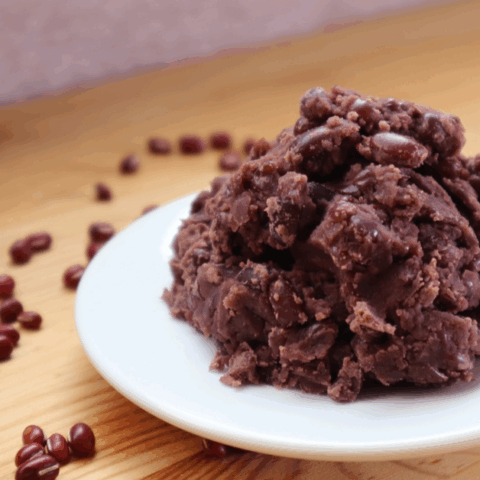
For those daydreaming about the day when global travel will safely resume, why not consider Japan as a top contender for your first overseas trip? Read on for five advantages that Japan offers to foodie tourists.

1. Regional Food Cultures
Japan is overflowing with regional specialties unique to particular geographies! First up- ramen- perhaps the most obvious food to start with given its popularity outside of Japan. Maybe you have heard of Ippudo, with its glamorous overseas ramen-ya? Ippudo hails from the southern capital, Fukuoka, home to tonkotsu ramen, a pork bone-based broth simmered for up to eight hours resulting in a deep and rich flavor. Sapporo, in Hokkaido to the North, is famous for miso-based ramen with pork back fat and sweet corn as characteristic ingredients. Other foods have their own regional flair as well
Although okonomiyaki, a pancake-shaped dish prepared on a searing hot flat grill is usually associated with Western Japan’s Osaka, you should also check out Hiroshima‘s version. It includes yellow soba or udon cooked inside for a truly decadent mouthful of noodles, meat, vegetables, and cabbage. Of course, there is so much more to Japan than ramen and okonomiyaki. Here are just a few additional regional specialties that the country has to offer- Okinawa: Okinawan soba and taco rice; Shikoku: sanuki udon; Tohoku: everything with beef!
2. Omiyage
Although souvenirs are commonplace in much of the world, Japan’s take on the gift-giving tradition carries added cultural meaning and delicious commercial opportunities for visitors. When travelling to another prefecture, many Japanese people stop to pick up a local treat for coworkers, families, and/or friends back home. This practice, rooted in long distance pilgrimages to shrines, has grown into a massive industry focused on developing and marketing the latest creations and well as old favorites.
Indeed, every prefecture and even many cities have their own omiyage. Nagasaki chooses to champion its long history of international cultural exchange by highlighting castella cake (a kind of pound cake) as the gift to purchase, while Fukuoka similarly offers up Torimon, a buttery lemon treat that fuses Western and Japanese tastes. Planning stops in Kanto? Make time to grab Mizozuke (a pickle from Gunma), Yoshiwara Denshu (a roasted soy bean powder from Ibaraki), and Hato Sabure (a yummy dove shaped cookie from Kanagawa) to delight those who couldn’t make the trip.

3. Health Food
As some of the longest-lived people in the world, it is perhaps unsurprising that many Japanese people, and scientists, point to the local diet as one of the most significant factors. While dreaming of future travels, why not explore the many healthy foods that Japan has to offer?
Perhaps the most synonymous drink of Japan, green tea has long been celebrated for its antioxidants, as well as prevention of type-2 diabetes and cardiovascular disease. Less widely known, but no less important, are natto, fermented beans often eaten with mustard and rice, and aojiru, a drink made from kale abundant in vitamins and minerals. For those venturing to Japan, some of these superfoods, like green tea and aojiru (a veggie drink), can be easily packed away in suitcases for consumption at home, while others, such as natto (fermented soy beans) must be eaten locally.

4. Desserts: Wagashi and Japanese-style Bakeries
These days, matcha (green tea powder) and green tea desserts are commonplace in many global cities’ cafes and restaurants. Yet, in Japan, these represent only small sampling of desserts available to residents and visitors! Wagashi, one category of desserts, are Japanese sweets typically made from rice and often include sweetened bean paste. Among the most popular wagashi are daifuku- dumpling-like sweets stuffed with bean paste and fruit, warabi mochi- summertime mochi (made of a kind of bracken plant gluten) sprinkled with kinako powder (soy bean powder), and dango-spherical and deliciously squishy rice dumplings.
If wagashi do not satiate your appetite for sweets, then I suggest turning to Japanese bakeries. While the idea of travelling great lengths to Japan to eat bakery goods may seem strange at first, your skepticism will quickly be abated after your first bite! Check out the soft and fluffy breads, like Hokkaido Milk Bread, cakes ranging from birthday favorite Strawberry Shortcake to Gateau Chocolat, and Croissants. Whether your preference for sweet is wagashi or baked goods, you won’t leave Japan disappointed!

5. Seasonal Delicacies
Regardless of whether you travel to Japan in spring, summer, fall, or winter, visitors can find plenty of seasonal gastronomical experiences to enjoy. Indeed, Japan is known for its ever-rotating roster of seasonal flavors which pop up everywhere from conbini (convenience stores) and vending machines to cafes and high-end restaurants. If you are planning a trip to see cherry blossoms in March, be sure to pack some sakura flower flavored sweets, like tricolor hanami dango, for your cherry blossom viewing picnic.
Coming in summer? Sample some kakigori (shaved ice) topped with mountains of seasonal fruit- like mango- or fruity syrups. Or, stop by a department store and shell out extravagantly for a square watermelon. For those whose vacation time lands in the fall, try out chestnuts and Japanese sweet potato grilled to perfection. To beat Japan’s winter chill, have some sweet winter strawberries and oden, a homey soup available at convenience stores and customizable with lots of domestic vegetables and seafood.




